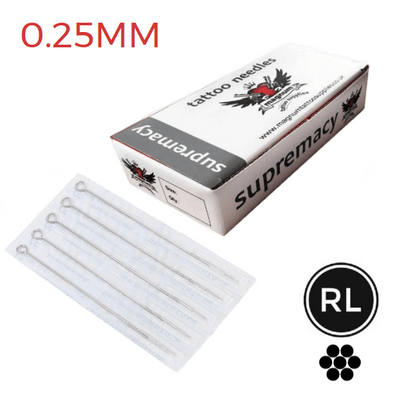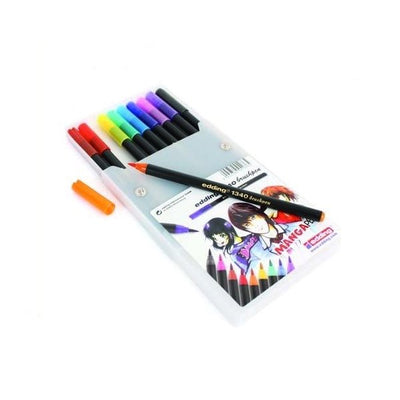When considering a blue ink tattoo, it's important to think beyond its beauty. Blue tattoos carry deep meanings, like tranquillity and stability, but there are practical concerns too. Safety, potential allergic reactions, and how the colour lasts over time are key considerations. High-quality ink is essential, and knowing how blue shades will look on your skin is important.
While blue tattoos can be a powerful way to express personal values or connections to culture, they require thoughtful planning to ensure the best outcome and satisfaction.
The symbolism and cultural meanings associated with blue ink tattoo
Blue ink tattoos carry a range of symbolism and cultural meanings that can vary significantly across different contexts and traditions.
Tranquillity and calmness:
Blue is often associated with calmness, peace, and serenity. It is frequently used in tattoos to symbolise a sense of tranquillity or to represent a calming influence in someone's life.
Depth and stability:
The colour blue, particularly in its darker shades like navy or midnight blue, is also associated with depth and stability. It can represent a deep, stable force, such as the sea or the vast expanse of the sky.
Spirituality and healing:
In various cultures, blue is considered a spiritual colour that can offer protection and promote healing. It's sometimes used in tattoos that are intended to be spiritually significant or healing.
Freedom and inspiration:
Lighter blues, such as sky blue, can symbolizse freedom, openness, and inspiration. These tattoos might reflect personal aspirations or a sense of liberation.
Loyalty and trust:
Blue is also a colour often linked to loyalty, trust, and truthfulness. It's a popular choice for tattoos meant to signify these qualities in personal relationships or beliefs.
Cultural significance:
In certain cultures, blue tattoos have specific meanings tied to cultural stories and traditions. For example, among the Berbers of North Africa, blue is considered protective, while in some Native American cultures, blue is seen as a sacred colour.
Is blue ink toxic or safe?
Blue ink tattoos are generally considered safe. Most modern tattoo inks, including blue, are made from pigments that meet safety standards for cosmetics and medical devices.
However, it's important to go to a reputable tattoo artist and parlour that follows all safety protocols, including sterilised equipment and high-quality inks.
Some individuals may have allergic reactions to specific ink components, so if you have sensitive skin or allergies, it might be wise to discuss this with tattoo artists and possibly do a patch test before getting a full tattoo.
Types of blue tattoo inks available
- Standard blue: This vibrant, clear blue shade is versatile across various tattoo styles. It's bright enough to stand out independently and works well in large blocks of colour and intricate details.
- Midnight blue: Midnight blue is a very dark blue, almost indistinguishable from black in dim light. It's excellent for adding depth and shadow to tattoos, making it a good choice for more subdued or sophisticated designs.
- Sky blue: Light and airy, sky blue is reminiscent of a clear daytime sky. It's perfect for creating a sense of lightness and is often used in tattoos that feature elements like clouds, air, or water.
- Navy blue: Navy blue is a deep, dark blue with an air of formality and depth. It's frequently used in nautical-themed tattoos or to provide a strong base colour in a design that includes multiple shades of blue.
- Teal: Teal is a vibrant blend of blue and green, making it eye-catching and dynamic. It's a popular choice for tattoos that feature natural elements, like the ocean or floral motifs, because of its rich, vivid tone.
- Electric blue: As the name suggests, electric blue is a striking, luminous shade that mimics the bright blue of electrical sparks. It's great for modern, artistic tattoos or any design that wants to highlight a pop of intense colour.
- Pastel blue: This soft, muted blue offers a subtle and gentle colour option. Pastel blue is ideal for minimalist tattoos or as part of a larger piece that utilises soft, blended colours for a serene effect.
- Metallic blue: Metallic blue has a glossy, shimmering finish that resembles metal. It's often used in designs that aim for a futuristic look or combined with other metallic colours to create a visually striking three-dimensional appearance.
Does a blue ink tattoo last?
Yes, blue ink tattoos can last a long time. Blue is one of the more durable tattoo ink colours and tends to fade less quickly than lighter colours like yellow or pink.
However, the longevity of any tattoo, including those with blue ink, depends on various factors such as the ink quality, the tattoo artist's technique, the location of the tattoo on the body, and how well the tattoo is cared for after it's done.
Areas exposed to more friction or sunlight may see faster fading. Proper aftercare and regular touch-ups can help maintain the vividness and definition of a blue ink tattoo over time.
Components and quality of blue tattoo inks
Blue tattoo inks comprise various pigments and carriers that determine their quality and safety. Here's a breakdown of the components typically found in blue tattoo inks:
- Pigments: These are the particles that give the ink its colour. For blue inks, pigments may be derived from metal salts, plastics, or vegetable-based substances. Specific blue pigments might include cobalt or copper derivatives, known for their vivid hues.
- Carriers: Carriers are liquids that dissolve the pigments and help deliver them to the skin. Common carriers include distilled water, ethyl alcohol, witch hazel, and glycerin. These ingredients help keep the pigment evenly distributed, aid in application, and act as disinfectants to minimise infection risks.
- Additives: Tattoo inks also contain various additives that enhance their properties. These can include preservatives to extend shelf life, brighteners for a more vivid appearance, and stabilisers like glycerin to prevent pigment settling. Some inks might also contain ethanol, a steriliser, and an astringent.
Safety and allergy considerations specific to blue inks
When it comes to blue tattoo inks, safety, and allergy considerations are important due to the specific components that make up these inks:
- Pigment components: Blue inks often contain pigments derived from metal salts such as cobalt or copper. While these provide vibrant colours, they can also pose risks of allergic reactions and other skin sensitivities. Cobalt, in particular, has been noted for its potential to cause dermatitis.
- Azo pigments: Some blue inks use azo pigments, which can decompose into compounds like benzidine, a known carcinogen, especially under exposure to UV light or during laser tattoo removal. This breakdown can increase the risk of skin cancer and other health issues.
- Regulatory considerations: In some regions, such as the European Union, certain pigments found in blue inks have been banned due to safety concerns. These regulations aim to prevent the use of inks that contain hazardous substances that could harm skin health.
- Allergic reactions: Like all tattoo inks, blue inks can trigger allergic reactions. Symptoms may include itching, redness, swelling, and discomfort at the tattoo site. These reactions can occur immediately after tattooing or even years later.
How blue ink appears on different skin tones
The appearance of blue ink on different skin tones can vary significantly, affecting the vibrancy and visibility of the tattoo:
- Fair skin tones: On lighter skin, blue ink can appear very vibrant and true to its shade. Lighter blues like sky blue can look particularly striking, but even darker shades like navy will stand out clearly against the skin.
- Medium skin tones: Blue ink still shows well on medium skin tones, though the ink may appear slightly different from how it looks in the bottle. Mid-tones like true blue or electric blue can look vibrant, while very light blues might not stand out as distinctly.
- Olive skin tones: Olive skin tones can make blue tattoos look a bit warmer, slightly altering the perceived shade of the ink. Darker blues are generally more effective at providing contrast than lighter shades.
- Darker skin tones: On darker skin, blue ink can sometimes appear more subdued, and the colour's vibrancy may be less noticeable. Dark blues like navy or midnight blue are usually more visible than lighter shades. It's important for individuals with darker skin to choose vibrant, rich blues to ensure the tattoo stands out.
Tips for the care and maintenance of blue tattoo ink
- Follow your tattoo artist’s aftercare instructions closely during the healing period.
- Keep the tattoo moisturised with a fragrance-free lotion after it heals.
- Apply a high-SPF sunscreen to your tattoo when exposed to sunlight to prevent fading.
- Do not scratch or pick at the healing tattoo to prevent damage.
- Drink plenty of water to keep your skin hydrated.
- Consider occasional touch-ups to refresh the tattoo’s vibrancy if needed.
- Maintain a healthy diet to support skin health, which benefits your tattoo’s appearance.
Final thoughts
Choosing a blue ink tattoo involves careful consideration of the ink’s symbolism, safety, and how it will look on your skin tone. Proper care can ensure your tattoo remains vibrant and healthy over time.
For those looking to ensure the highest quality and safety standards, consider browsing our selection of premium blue tattoo inks. Shop now to find the perfect shade that meets your aesthetic desires and adheres to the highest industry standards.



























































 Studio supplies
Studio supplies












 Power & batteries
Power & batteries








 Aftercare
Aftercare





















 Apprentice
Apprentice


 Piercing & jewellery
Piercing & jewellery







 PMU supplies
PMU supplies




 New arrivals
New arrivals
 Gift vouchers
Gift vouchers
 Shop all
Shop all



















































